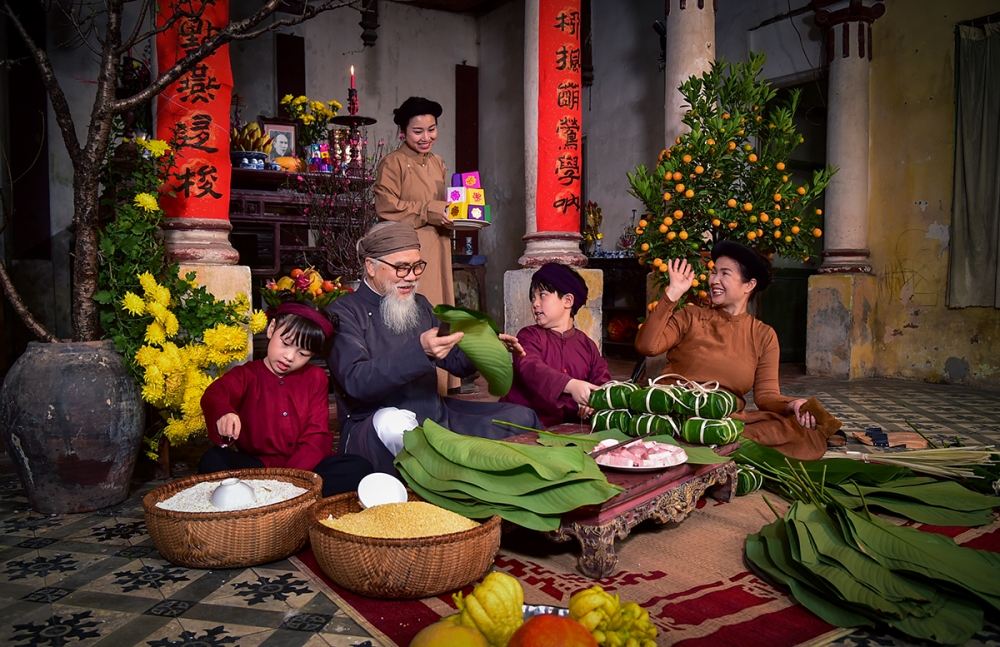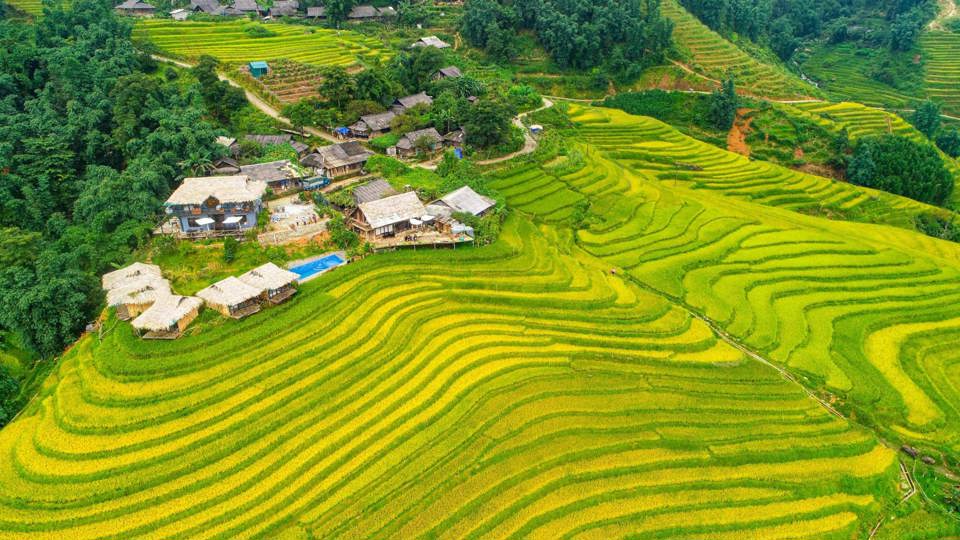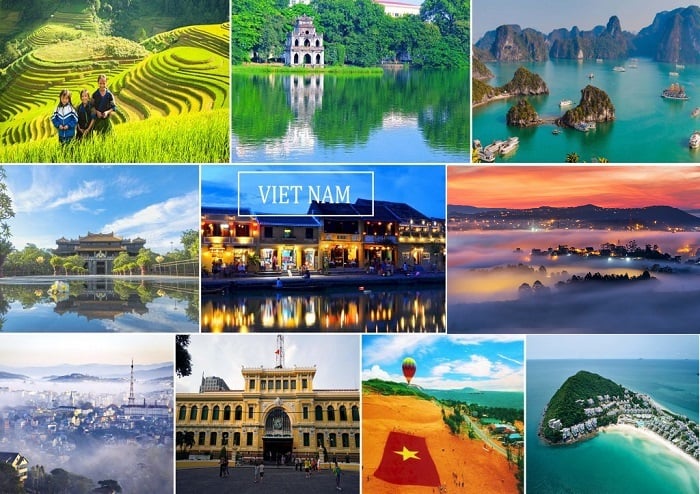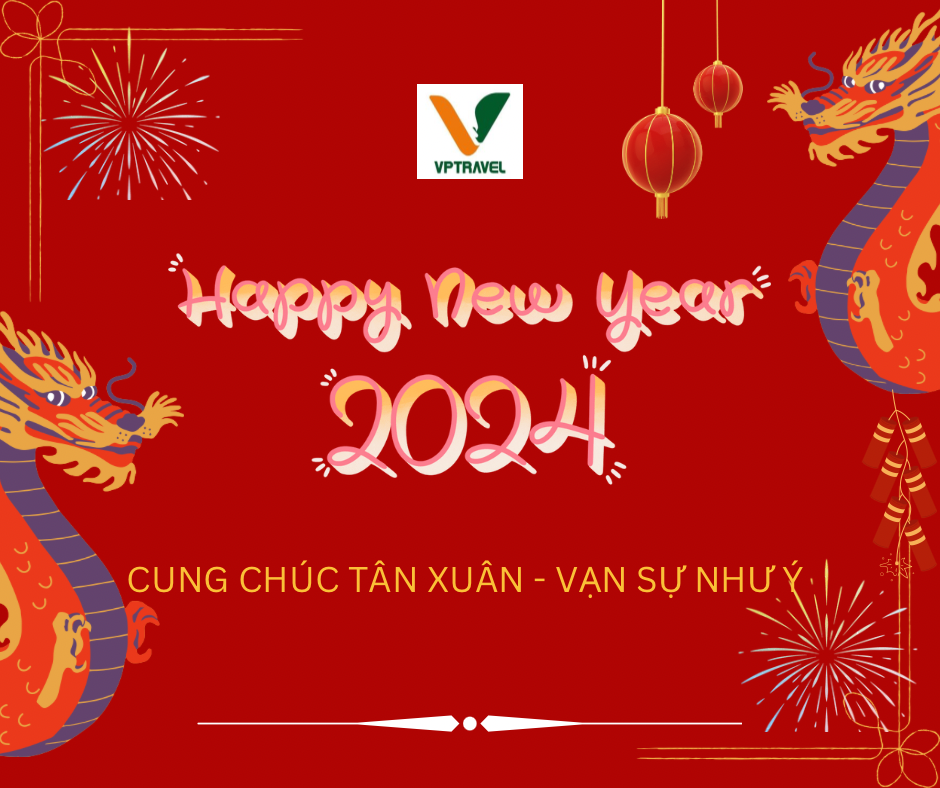Traditional festivals have become, for centuries, an indispensable part of daily life in all countries, including Vietnam. They concern all social classes, urban and rural alike, and represent an invaluable treasure of Vietnamese history and culture. There are hundreds of typical festivals in Vietnam each year. Whether they come from popular traditions or commemorate historical events, they all have their own characteristics and their particular rites. Before presenting in more detail all the main traditional Vietnamese festivals, it is necessary to open a parenthesis here: Most of the popular festivals, which we will see below in chronological order, are typically Vietnamese or deeply “Vietnamesed” . The rest is of foreign origin, this is notably the case of the Day of the Dead or Pure Clarity (Thanh Minh) which bears the Chinese imprint, or the anniversary of the “Pardon of the Dead” (Vu Lan) which having a dual Hindu and Chinese origin.
1. TET – the New Year’s party
Period
Tet, or Vietnamese New Year, begins on the first day of the first month of the lunar year.
This is why it is still called “Têt Nguyên-Dan” or “First Morning Festival”, considered the most important, most attractive and picturesque festival of the whole year. Tet Nguyen Dan is generally celebrated on the same day as the Chinese New Year, since Vietnam and China have the same lunisolar calendar. However, the period for observing the new moon, which marks the beginning of the year, can vary by a day depending on the respective capitals from where it is observed. Likewise, many of the modalities of the celebration are identical.
Custom
It is an opportunity for families to go to the pagoda or visit their relatives and friends. However, we are careful not to visit other families too early: the first visitor of the year brings with him good luck or bad luck. To thwart fate, certain heads of family leave their house at midnight and return immediately afterwards. You can also invite a person who is successful or considered particularly lucky. The ritual greeting is “Phuc – Loc – Tho” (“happiness, prosperity, longevity”). The children will receive “Li xi” money in red envelopes.
Tet is also an opportunity to taste traditional dishes, in particular “banh chung” or “banh tet” (glutinous rice cake) which cannot be absent during this festival. Tet is the traditional festival dearest to the hearts of the Vietnamese, so preparing for these festivities absorbs a large part of their resources and all their energy for two weeks.

2. Khai Ha Festival
Period
The 7th day of the 1st lunar month.
.jpg)
Custom
The owner offers money and votive paper clothes to his ancestors, and says goodbye to them. The bamboo stake, “cay neu”, is lowered and the new year is welcomed. According to popular beliefs, if the weather is mild and the sun shines for Khai Ha, the man will be healthy and lucky throughout the year.
3. Tet Thuong Nguyen (Tet Nguyen Tieu)
Period
Tet Nguyen Tieu takes place on the 15th day of the 1st lunar month, the first full moon of the year. This festival is usually organized at pagodas, because that day is the anniversary of the birth of Buddha.

Custom
Temples and pagodas are crowded with elderly people who burn incense and platters of fruit and other offerings are presented.
4. Tet Thanh Minh
Which literally means Clear and Bright

Period
The first days of the 3rd month of the Vietnamese lunar calendar where the weather is favorable for visiting the tombs of our ancestors.
Custom
People then take advantage of the Thanh Minh festival to weed and maintain the tombs of their ancestors. A ceremony is organized in the family temple or in the funeral home of the clan leader to pay homage to the ancestors.
It is also an opportunity for clan members to come together and strengthen their bonds. In recent years, most graves have been moved to official cemeteries, and many of them are paved with bricks or concrete. So there is no real need to make any maintenance efforts for the tombs, but people still visit those of their ancestors to burn incense, not only during the Thanh Minh festival, but also for Lunar New Year.
Visiting tombs and worshiping ancestors is one of the characteristics of the spiritual life of the people of this country.
5. Hàn Thuc – The Cold Food Festival
Period
The 3rd day of the 3rd lunar month.

Custom
During this festival, we eat “Banh Chay” and “Banh Troi”, a kind of sweet sticky rice cake. But they are eaten cold, to remember a mandarin, Gioi Tu Thoi, who saved his king, but whom he later forgot. Gioi Tu Thoi let himself die in a burning forest. Rather than coming back to ask for a charge. Since then, at this festival, people avoid eating hot dishes, for fear that the fire will awaken the pain of their bruised souls.
6. Tet Doan Ngo – The Double-five Festival or “dragon boat festival”

Period
The fifth day of the fifth lunar month, that is to say the 2nd month of summer.
Meaning
This festival aims to prevent epidemics and harmful influences caused by evil spirits. It is one of the most important festivals along with the Spring Festival and the Mid-Autumn Festival.
7. Vu Lan Festival – The Festival of Forgiveness of the Dead

Period
The 15th day of the 7th lunar month.
Custom
During this second largest Buddhist festival, believers pay homage at home to the altar of their ancestors. At the same time, they prepare a small altar at the entrance to their house, making offerings of food and gifts for the wandering souls of the forgotten dead. People also participate in several activities: pilgrimages, visits to pagodas, vegetarian diet, charitable activities, offerings of votive papers for the dead... In Vietnam, this festival is no longer exclusively reserved for Buddhists. It has become a tradition for everyone.
8. Tet Trung Thu (Mid-Autumn Festival)

Period
The 15th day of the eighth lunar month is the time when the moon pours its beneficial light onto the Earth.
Custom
Even though this festival is mainly dedicated to children, adults also participate. The children sing, dance and make a parade of lanterns in the shape of the moon, star or animal. They eat fruit and cakes that have been prepared especially for them.
9. Le Tao Quan – La Fête des Dieux Lares

Period
The 23rd day of the 12th lunar month
Cult figure “Ong Cong” (the Genius of the earth) and “Ong Tao” (the God of cooking).
On this day, they both fly to the Heavens to report to Ngoc Hoang (the Jade Emperor) about the life of the owner of the house where they live, and to ask for luck, prosperity and happiness. On the eve of the Lunar New Year, they both return to earth to resume their duties, which involves overseeing the household's kitchen.
Custom
On the day of this festival, the Vietnamese prepare steamed sticky rice with sugar, cone-shaped cakes, put incense and flowers for the offering ceremony. They also prepare a basin of water in which they put a large live carp. After the ceremony, the carp are released into a pond or the river.
Meaning
First, according to popular belief, the carp swims well and can pass through the Gate of Heaven to transform into a dragon. Thus, Ong Cong and Ong Tao will be able to ascend to heaven on a carp, then a dragon. Secondly, this custom is considered a generous action that brings happiness, a good agricultural harvest.



